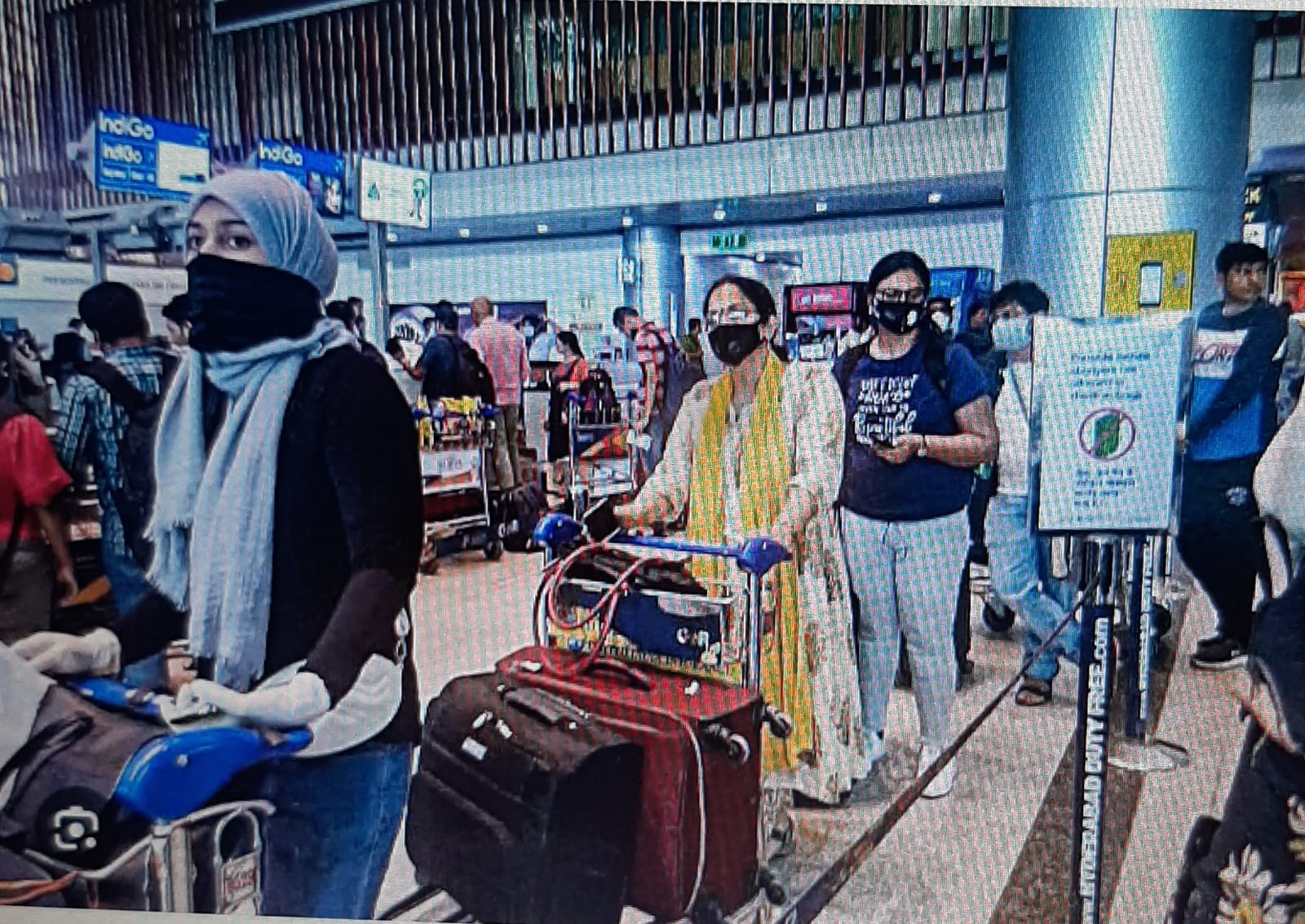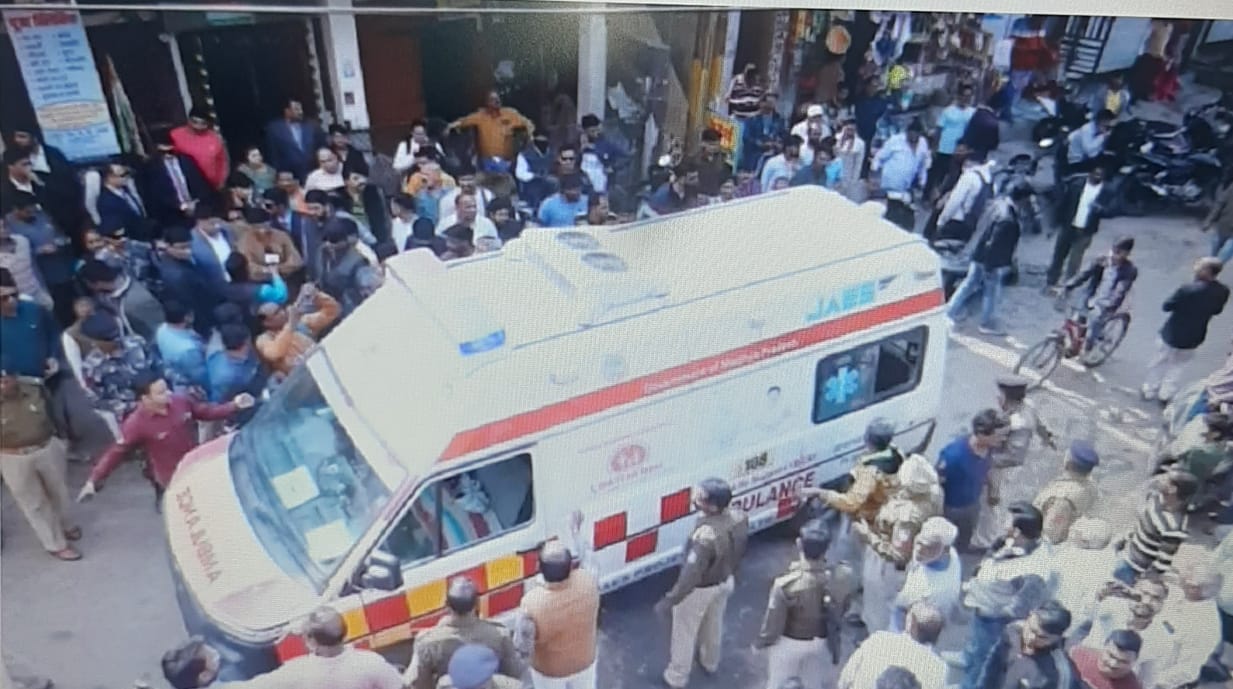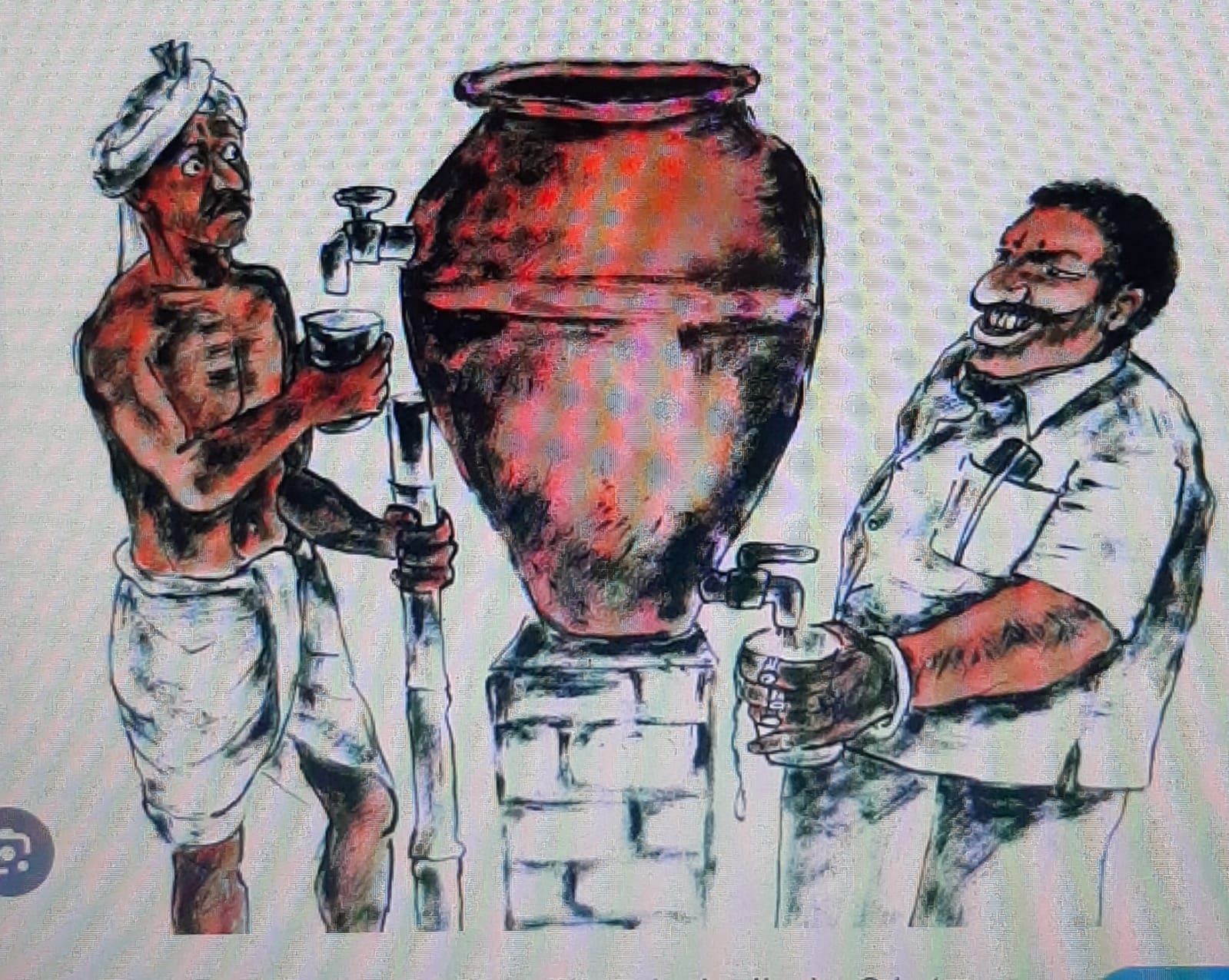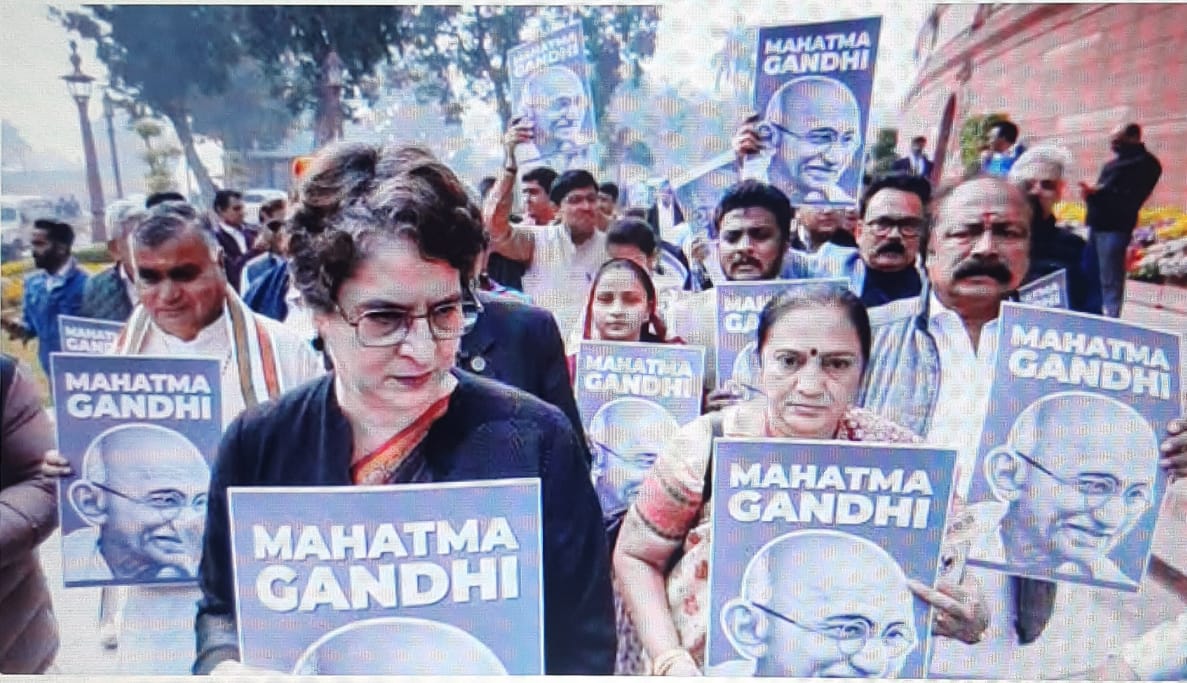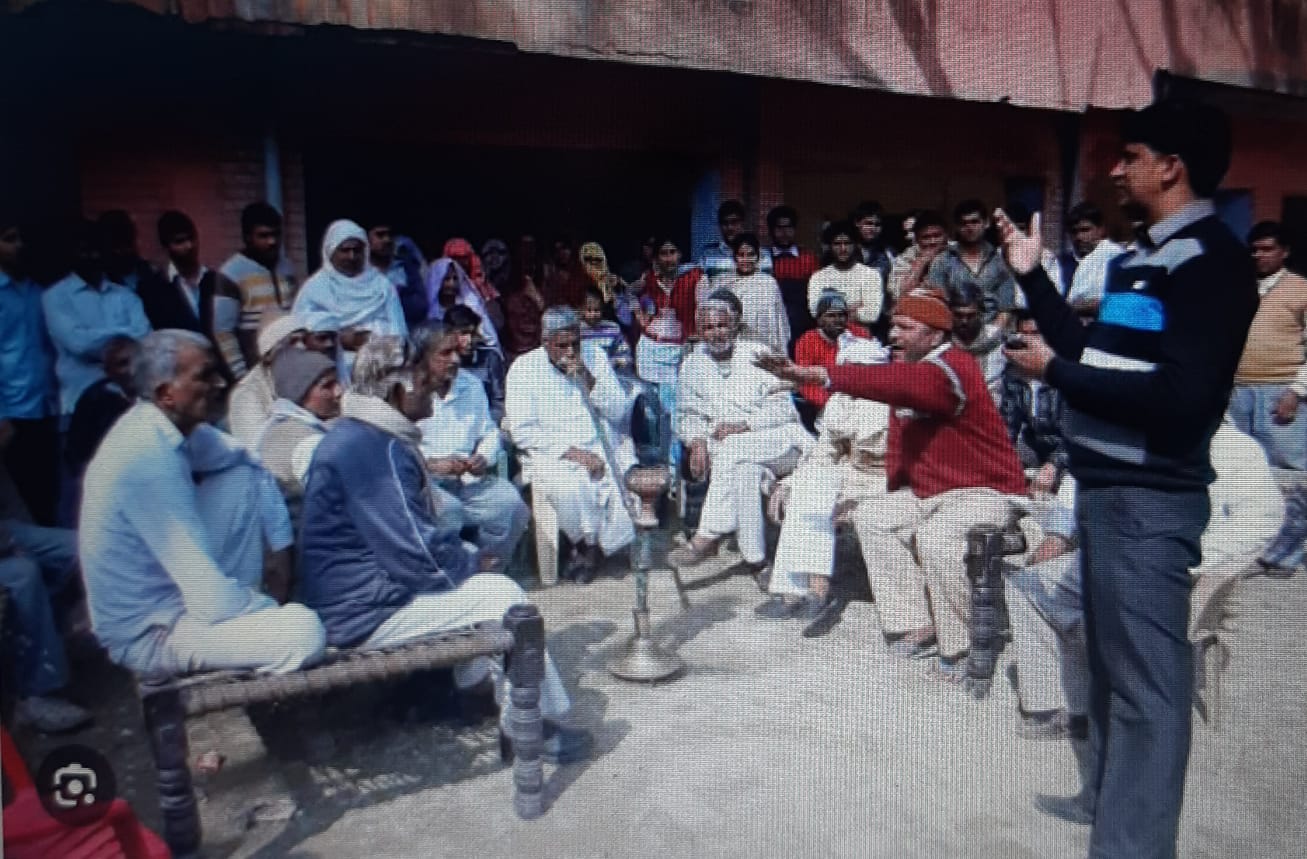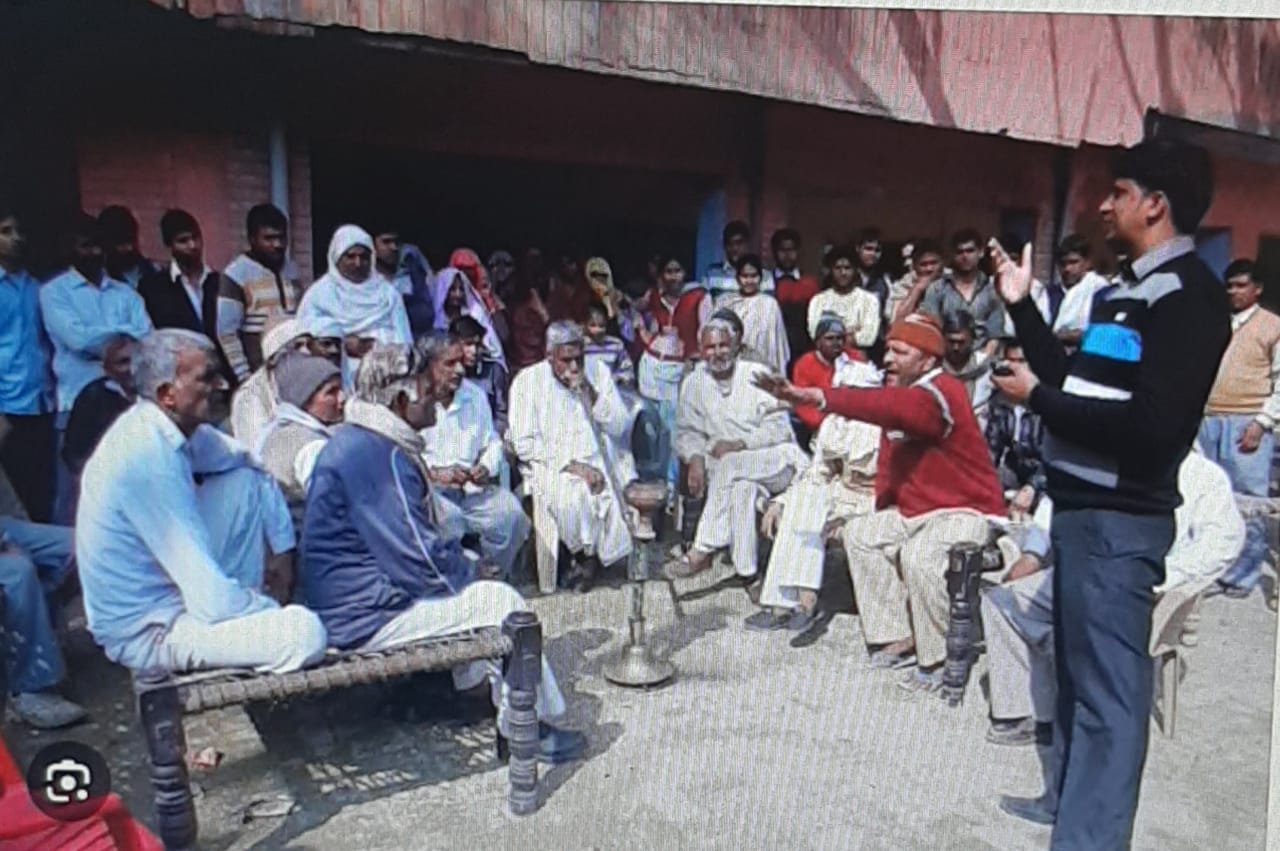
It is widely believed that ‘local government is an essential component of democratic society providing critical services, representation and accountability to its citizens’[i]. Multilevel governance assumes special significance in large countries with federal set-up. Local Government is the arena where citizen-centric governance can take roots and where citizens feel the impact most powerfully, writes former IAS officer Sunil Kumar
Abstract
In this paper captioned ‘Challenges and Strategies for Strengthening Grassroots Governance’, the author argues that since federalism and democracy are part of the basic structure of the Constitution, it appears plausible that the rural and urban local governments, following the 73rd and 74th Constitution Amendment Acts, are regarded as part of the basic structure of the constitution. Once seen in that light, the whole approach towards decentralisation and devolution would undergo a tectonic shift. A critical evaluation of the achievements and challenges would reveal that the state needs to address certain design flaws through suitable amendments in the Constitution and more so in the State Panchayati Raj and Municipal laws. Focus would need to shift to providing good governance to citizens which would per se nessitate not only strong local governments with full control over funds, functions and functionaries but also setting up institutions and mechanisms for enhanced accountability and transparency. Steps that may need to be taken in this regard at the Union and State levels and by different stakeholders have also been delineated in this paper. Since local government is a State subject, major initiatives need to be initiated and demanded by local government and State functionaries rather than handed down by the Union government. The author argues that these steps are necessary to ensure citizen-centric governance.
A study of local governments in federal and quasi-federal systems reveal that while in some countries local government finds mention in the constitution as an essential part of the federal set-up, in most others it is the creation of state/provincial legislations and remains directly under their control[ii]. The situation in India is complex in the sense that while, after the coming into effect of 73rd and 74th Constitution Amendment Acts (CAA), rural and urban local governments find specific mention in Part IX and Part IX A of the Indian Constitution, local governments remain very much the creation of State Panchayati Raj and Municipal laws.
It is widely believed that ‘local government is an essential component of democratic society providing critical services, representation and accountability to its citizens’[iii]. Multilevel governance assumes special significance in large countries with federal set-up. Local Government is the arena where citizen-centric governance can take roots and where citizens feel the impact most powerfully.
Study of Federalism in India has been, by and large, restricted to study of the Union and the States – their political, administrative and fiscal relationship. It is clear that Indian federalism is assymetric – tilted towards the Union rather than the States. However, it is time we recognize local government – both urban and rural – as an integral part of the Indian federation. If democracy and federalism are integral part of the ‘basic structure’ of the Indian Constitution[iv], then local government would also qualify as part of the ‘basic structure’ of the Constitution.
Seen in this light, after more than thirty years of the 73rd and 74th CAA, despite lot of ground being covered in establishing local governments as the third tier of governance, the outcome varies from State to State. It is being increasingly felt that it is time to revisit Part IX and Part IX A of the Indian Constitution and evolve a broad consensus on what measures need to be undertaken by different stakeholders – most notably the Union and the State Governments – to strengthen Local Government in the country especially if focus has to shift to ‘good governance’ from the citizen’s point of view.
In the bargain, the fact that Local Government figures in the State List of Seventh Schedule must not be lost sight of. This would entail a few amendments in the Constitution to address some structural and design issues and many more in the State Panchayati Raj and Municipal Acts and Rules. A new governance architecture for the republic would need to be thought through which leads to deeper democratic decentralisation and stronger local governments.
Administrative & Financial Viability
Working of local governments in different States/UTs over last three decades has shown that these need to be made administratively and financially viable units if they are to perform their assigned roles effectively. Improved transport and communication network has shrunk physical distances in the last three decades. Hence, the optimal size of Gram Panchayats (GP) could be around ten thousand in the plains and less in difficult areas. Issues relating to delimitation of boundaries of local governments, wards and merger of GPs (wholly or partially) in Urban Local Governments (ULGs) should be dealt by a non-partisan and competent constitutional body.
State Delimitation Commission
At present, Kerala, Karnataka and Maharashtra legally provide for a Delimitation Commission (separate from State Election Commission (SEC)) for undertaking demarcation of wards and consequent reservation of seats for SC/ST/OBC & women. However, the working of the State Delimitation Commission would evoke greater public confidence if it is modeled on the existing provisions relating to demarcation of Assembly and Lok Sabha constituencies and is included in Part IX A of the Constitution. Let State Governments set it up under the chairmanship of a retired Supreme / High Court Judge after every census to undertake a fresh delimitation of existing local government constituencies and reservation thereof as well as recommend merger (in part or full) of GPs in existing ULGs or constitution of a new ULG unit itself. The report of the State Delimitation Commission should be binding on Government and the State Assembly should be authorized to either accept it or reject it but with no power to amend it.
Local Government Elections
The process and procedures for conducting elections to local governments by the SEC need to be streamlined to the extent possible. Although Constitution mandates holding of elections before the expiry of the five year term of Local Governments, election process is not completed as scheduled in several States. This creates an anomalous situation.
Delayed Elections to Urban Local Governments
Delayed elections to ULGs is perhaps much more common than for rural local governments (RLGs). This is in violation of the Constitution. As per Janaagraha’s Annual Survey of India’s City System (ASICS) 2023, 1484 out of 4766 Municipalities did not have elected councils in place as of September 2021. Article 243 U of the 74th CAA stipulates that the duration of ULGs is five years and that an election to constitute an ULG should be completed “before the expiry of its duration”. Further, in case of dissolution of the elected council by the State, the election should be held before the expiration of a period of six months from the date of dissolution. Despite the Supreme Court stating in Suresh Mahajan V. State of Madhya Pradesh (2022) that this constitutional mandate is inviolable, State governments do not hold timely elections to local governments. Greater Chennai Corporation had elections in 2022 after a gap of nearly six years; Municipal Corporations of Mumbai and Bengaluru are awaiting elections for over two years and four years respectively after the expiry of their term. Further, even where elections to ULGs were held, in certain cases, councils were not constituted and elections of Mayors, Deputy Mayors and Standing Committees were delayed. In Karnataka, there was a delay of 12-24 months in the formation of elected councils after the declaration of election results in most of the 11 city corporations.
Election on Party lines
While elections to ULGs are, by and large, contested on party lines, same is not the case with RLGs in several States. Once local governments become strong, it is perhaps only a matter of time before political parties would begin to formally join the fray and contest all local government elections. Even direct elections for Block Panchayat & District Panchayat Presidents could become a reality once their role and functions are clearly defined and candidates are put up by political parties.
Extending Anti-Defection Law to cover Local Governments
There is urgent need to check defection of candidates elected on party tickets in local government elections. This can be achieved by bringing elected representatives (ERs) of local governments too within the ambit of Anti-defection laws.
Other challenges in elections to ULGs
In addition, there are further challenges: discretion of government officials in scheduling elections on time; possibility of the State Government exercising undue influence on officials to delay elections; discretion of officials in identifying the presiding officer; possibility of conflict of interest as the presiding officer may not be independent; and the manual ballot process. A reform road map for timely, free and fair election is much needed[v]. It is perhaps time to also evaluate a potential role for the SEC in the election of Mayors, Deputy Mayors and Standing Committees given what happened in Chandigarh.
Fixed Term for Mayor
In India, 17% of cities, including 5 of the 8 largest largest ones, have mayoral terms less than 5 years. It may perhaps be a good idea to fix a standard term of five years for Mayors. Further, there should be greater uniformity in defining powers and functions of Mayors, Deputy Mayors across States.
Mayor-in-Council model
The concept of ‘cabinet form of government’ through the Mayor-in-Council model (consisting of the Mayor and upto 10 elected members of the Corporation) in the ULGs was first introduced in Kolkata Municipal Corporation and has also been introduced in Madhya Pradesh, Chhatisgarh and Tripura[vi]. Direct election of Mayor, fixed tenure of five years impart stability and could help improve the quality of urban governance.
Urbanisation & re-development of peri-urban areas
As per 2011 Census, about 32% of India’s population was living in urban areas and 68% in rural areas. Some studies show that this figure could be as high as 60 percent. It is estimated that there are over 24,000 large villages with 5,000+ population which already exhibit urban characteristics, and are home to 190 million people[vii].
Dr. Vijay Kelkar & Dr. Abhay Pethe[viii] have pointed out that several Reports including of World Bank show that already 60% of India’s population was living in urban areas and that the Census definition of urban was too stringent. According to satellite data of the Global Human Settlements Layer (GHSL) of the Group on Earth Observations at the European Commission, India was 63 per cent urban in 2015 – almost double the Census 2011 figures! Underestimation of urban population creates problems for both Central Finance Commission (CFC) and State Finance Commissions (SFCs) and also results in poor targeting of funds like those of MGNREGS and National Health Mission. The way urban is defined (in the census and across states) has far-reaching consequences on planned urbanisation, especially of census towns and peri-urban areas.
Unplanned growth in peri-urban areas, especially GPs located in proximity to Expressways, National & State Highways, poses new set of challenges. These need to be separately deliberated upon in context of spatial planning, development of suitable habitats with all modern amenities, provision of public goods especially in health, education and other service sectors and creation of new job opportunities by boosting economic growth. There is need to bring all stakeholders – elected representatives, industry, officials, academics, citizen groups etc. together to deliberate on appropriate governance structure based on subsidiarity principle when they examine the nature of re-development of these fast urbanising areas.
One Ministry / Department for Local Government in Union & State Governments
In order to effect a change in mindset of officials as well as elected representatives regarding the rural- urban dichotomy, it would be a good idea to have one Ministry of Local Government looking after both rural and urban local governments at Union Government level. At State level, there is one unified Department of Local Government in Kerala. This should be adopted in all other States as then it would shift focus on governance issues in both RLGs and ULGs.
Rural-Urban Continuum
It is possible that in the next one to two decades, the distinction between rural and urban will recede to the background and there will be a continuum of smaller local governments (in terms of geographical spread and population) to larger local governments. Ultimately, there would be only smaller and larger units of local government with quality of life and quality of services delivered to citizens largely at par in all local governments, whether big or small. Local Governments could then be categorised by size and type as under:
- Rural Local Governments (GPs) – Less than 50,000
- Town Areas (Small cities)- Between 50 to 100,000
- Municipalities (Emerging cities) – Between 100,000 to one million
- Municipal Corporations (Metropolitan cities) – Million-plus
The governance structure of these local governments would need to be different especially if focus is to be on citizen-centric governance. A differentiated approach to planning, governance, infrastructure, and financing for metropolitan, emerging, small cities and smaller rural local governments would need to be put in place. Likewise, the challenges before the District Panchayats of 72 highly-urbanised districts[ix] would be different and would require special policy attention.
Need for Planning for Metropolitan Region
A Metropolitan region could include several rural and urban local governments and for certain services and infrastructure development, the Metropolitan region could be a more efficient and effective planning unit than an ever-expanding Municipal Corporation! The planning & governance structure for Metropolitan region would need to be so devised wherein role and powers of constituent local governments are clearly spelt out.
Carving out a role for Block Panchayat & District Panchayat
The present three-tier Panchayati Raj system in almost all States seems to be singularly lacking in seamlessly integrating Gram Panchayats, Block Panchayats and District Panchayats. It has been observed that Zilla Parishads in Maharashtra were much stronger prior to 1993 than after the 73rd CAA! Primary focus of both State and Union Government has so far been on GPs and not so on Block Panchayat (BP) and District Panchayats (DP). The evolution of the practice of ‘Guardian Ministers’ in last three decades in almost all States has further eroded the powers and functions of DP Presidents.
While all work would necessarily be carried out in the geographical boundaries of GPs, role of BPs and DPs need to be demarcated and clearly spelt out. For instance, certain projects relating to watershed development and covering several GPs could be in the domain of BP. Likewise, larger projects requiring higher degree of skills, technology, finances and contract management could be in the domain of DP. This would need careful deliberation among all stakeholders.
A point to ponder is whether Block Panchayat and District Panchayat should contain urban areas or not? If these are to have representatives from both rural and urban areas, then the tendency to see issues from the prism of rural-urban binary would slowly weaken and the mindset of elected representatives and officials would also change over a period of time. Answers to these basic design issues would determine the quality of solutions that are found.
Curious case of Parastatals
In several States, various functions assigned to ULGs have been taken away from their jurisdiction and assigned to parastatals bodies like Development Authorities, Water supply organisation, Urban Planning Bodies etc. This has weakened the ULGs considerably. In addition to ULGs, the Urban Development Department (UDD) has key parastatal agencies that deliver or facilitate urban infrastructure and services. The parastatal agencies function totally independent from the local governments and these agencies are directly accountable to the State Government. This precludes effective participation of citizens in the management of these services. These need to be brought under the administrative control of DPs and ULGs.
Democratic functioning of Local Governments
A special feature of Local Governments is their strong connect with residents and ability to respond to their needs in the shortest possible time. Institutions like Gram Sabha/ Ward Sabha provide avenues to all voters to articulate their views and make the ERs & local government functionaries take note and respond. Local Governments provide the best options wherein ‘direct democracy’ can be seen at work: in some States there is even ‘right to recall’! It is at this level that citizen participation in formulation of public policy can become a reality.
In addition there seems scope and place for introducing new measures like organizing Bal Sabhas/ Mahila Sabhas in GPs; Townhall type meetings in urban areas wherein officials, elected representatives, experts shed light on governance issues to citizens at regular intervals. There is scope for institutionalizing interaction of ULG functionaries with various trade & professional associations in urban areas. These would greatly help in demystifying governance and increasing citizen awareness on critical issues like, for example, climate change and sustainable development.
Absence of systematic citizen participation and transparency in the functioning of ULGs has been noted. At present, only 3 out of 35 states/UTs have mandated public consultation on city budgets. Further, only 11 out of 35 states/UTs in India have enacted the public disclosure law, which requires extensive disclosures on finances and operations, across all city government categories. Five out of 35 states/UTs have enacted the community participation law and have notified rules for the same which requires functioning ward committees and area sabhas for citizen participation[x]. However, even in these States, the provision remains largely on paper.
Manual for Meetings of Gram Sabha & General Council
Today there seems to be a strong case for laying down the Standard Operating Procedures (SOPs) for conducting meetings of Gram Sabhas, Ward Sabhas, Standing Committees of Gram Panchayats in rural areas and of similar structures in ULGs. The Constitution provides for meetings of Ward Committees in ULGs. But this provision seems to have been ignored in almost all States. The SOPs would be simplified version of Manual of Parliamentary Procedures (Kaul & Sakdhar) and cover all aspects of working of these bodies founded on the principles of separation of powers, accountability, oversight, transparency etc. The Secretariats of Parliament and State Legislatures could provide very useful insights, training material for these bodies of local governments in States.
Strengthening of Ward Committees & Municipal Councils
It is felt that constitution of ward committees in every ward with a maximum population of 30,000 citizens in Municipal Corporations would go a long way in making local government functioning more accountable to citizens. Presently, the size of ward varies from State to State. Model municipal acts and modern city councils will provide much-needed legislative backing and infrastructural support for councils, and will instil trust and credibility among citizens.
Bureaucratic Stranglehold over ERs of Local Governments
It is ironical that several State Panchayati Raj Acts contain provision for suspension and removal of ERs of rural Panchayati Raj institutions by Government functionaries such as District Collector or Divisional Commissioner. This is clearly a case of bureaucratic over-reach. Likewise, power of State Government to supersede local governments or declare their resolutions ‘null and void’ seem to be antithetical to democratic norms. These need to be discarded at the earliest[xi].
Remuneration of ERs to Local Governments
An elected representative to any of the three tiers of Government – Union, State, Local Government- must enjoy similar perks and privileges. Further, it is high time that work of ERs in Local Governments are not treated as ‘part-time’ jobs – on the contrary it is a ‘full-time’ job and appropriate ‘market value’ must be placed on the job of a Corporator, Ward Member, Sarpanch or Mayor[xii]. This would help put in place a fair and equitable system wherein premium is placed on efficient and honest functioning and there is zero-tolerance of corruption by any public servant.
Role & Functions of Local Governments
The devolution of functions by State governments to Panchayats in India occurs in three stages (by legislation, activity mapping and government order). It is almost complete in respect of legislation for all the States/ UTs and activity mapping, but limited progress has been achieved in the third stage of devolution (John, 2019)[xiii]. The devolution of powers and functions to the Panchayats varies considerably across the States. Kerala & Karnataka have devolved major functions to Panchayats. While devolution of functions to RLGs remain incomplete in most States, a disturbing trend of withdrawing devolved powers and functions is also being seen in some States. Madhya Pradesh stands out as one such ‘roll back’ State.
Currently, not even one state government has transferred all the 18 functions to ULGs[xiv]. Maharashtra alone has transferred fourteen functions fully whereas Andhra Pradesh has transferred ten, Gujarat nine and eight each by Tamil Nadu & Karnataka. Uttarakahand has transferred just one function fully to ULG.
Another disturbing trend is introduction of schemes of Urban Development Department & MOHUA in matters listed under 12th Schedule and setting up of parastatal organizations for providing specific services which are not responsible to the ULGs. This trend serves to weaken the ULGs. Likewise, the separate functioning of rural development department through its departmental officials and virtually no accountability to the Gram Sabha or the BP and DP, is increasingly becoming an anachronism and major impediment in strengthening grassroots governance.
Law & Order & Local Government
A major issue in urban life is the citizen’s interface with law and order ranging from traffic violations to crimes like murder. Most urban metropolitan areas need specialised dedicated policing set-ups and this is a crucial part of urban governance. While traffic police and fire departments must be handed over to Urban Local Governments, the role, reponsibility and relationship of Police Department / Police Commissionerate system with ULGs need to be looked into and defined as these have a bearing on the quality of life index in cities.
Land Revenue Administration
Vidhi Centre has, in a research paper, noted that most State laws such as the Karnataka Land Revenue Act, 1964, the Madhya Pradesh Land Revenue Code, 1959, the Punjab Land Revenue Act, 1967 exhibit a heavy reliance on the District Collectorate for determining revenue rates, obtaining permissions for land-use conversion, conduct of surveys, land grants etc, indicating a very top-down approach to governance. This over-centralisation has resulted in an inefficient administration which is non-responsive to local conditions and requirements. It has been suggested that the system of land revenue administration should be redesigned to align with the goals of the 73rd & 74th CAA to ensure accessibility to the local people, coupled with increased transparency and efficiency[xv].
Towards this end, the Centre has suggested following steps:
- Revision of land administration frameworks to create procedures to determine the collection and utilisation of land revenue, and facilitate administration of land within the local context by empowering panchayats and urban local governments.
- Active devolution of land administration powers to local self-governments, except in those areas where the Fifth and Sixth Schedules of the Constitution apply.
Local Government List in Seventh Schedule
In this scenario, it may perhaps be better to add a ‘Local Government list’ in the Seventh Schedule where all functions listed in 11th & 12th Schedule are incorporated along with a few more such as traffic management, fire services, public transport, primary health care, gender equality, disaster management, digital infrastructure etc. While law making powers may remain with State legislature, local governments may be assigned rule making powers.
No scope for unfunded mandates
There is wide-spread consensus among experts that there is no space for unfunded mandates for the well-being of the LGs. They cannot be burdened with more agency functions without providing requisite funds for meeting the associated administrative costs.
Functionaries of Local Governments
At present, both rural and urban Local Governments are grossly under-staffed and the administrative control over staff deputed in Local Governments is extremely loose and ambiguous. Consequently, the quality of work in local governments suffers. Poor human resource management, in terms of number of staff, skills and competencies of staff, organisation design, and performance management are the bane of both RLGs & ULGs. Staffing shortage in GPs was examined by the Sumit Bose Committee. However, it’s recommendations remain unimplemented in several States.
There is a 36 per cent average vacancy in city governments, in addition to critical skill gaps and only 14 out of 35 states and UTs mandate any kind of training for their municipal officials. Lack of adequate staff both in terms of numbers and possessing appropriate skills is a mill-stone around the Local Government’s neck[xvi]. Both ULGs and RLGs must be equipped with specialised and well trained staff and officials and also source services of professionals as the case may be.
There is need to clearly define the relationship of Local Governments vis a vis Government Departments and Government officials working at Block, District and State levels under the administrative control of Heads of Departments. Existing system of dual control over Government officials deployed in Local Governments is not conducive to efficient functioning of Local Governments. Creation of a separate Local Government Cadre is an idea whose time has come.
Redefine the role of District Collector
If local governments are to be strengthened, then it is imperative that the role of District Collector in the district is redefined. The Collector must be placed under the control of District Panchayat.
Capacity building of Local Government functionaries
There is need to focus on creating new leadership in Local Government sector. This would call for addressing issues like low self-esteem of leaders as well as officials of local governments and exposing them to best training programmes wherein they get to learn from experience of their counterparts and focus on finding solutions instead of listing obstacles and finding scape goats.
Finances of Local Government
As per existing schema, there are three major sources of funds for Local Governments – whether rural or urban. These are the devolution of funds based on recommendations of the Central Finance Commission (CFC) and State Finance Commissions (SFC) and Own source of Revenue (OSR) of Local Governments. Studies suggest that funds devolving to Local Governments based on recommendations of CFC constitutes just about 4% of the total devolution. Both 14th and 15th CFCs recommended transfer of about 42% of funds to States; 4% to Local Governments and the balance remained with Union Government. It is estimated that only about 20 per cent of municipal expenditure is covered by property tax, the largest OSR for cities.
Central Finance Commissions
Successive CFCs have recommended a consistent increase in grants to PRIs – from Rs. 4,381 crore by the Tenth CFC to Rs. 2.37 lakh crore by the Fifteenth CFC. Furthermore, the CFCs have recommended making audited accounts and budgets of PRIs publicly accessible. Similarly, the grants recommended for release to ULGs has also ssen consistent increase from Rs 1000 crore by the Tenth CFC to over Rs One lakh crore by 15th CFC.
A RBI report[xvii] has observed that finances of PRIs face constraints in that they have limited own revenues from property taxes, fees, and fines. Nearly 95% of their revenues are generated through grants from higher levels of government, underscoring their heavy reliance on the Central and State governments. Even as grants-in-aid from the upper tiers of government have aimed at mitigating horizontal disparities, the large dependence on grants tend to affect their financial self-reliance, limiting their ability to decide on local spending and priorities independently. Such dependence also lessen their drive to establish independent revenue streams. For sustainable growth, Panchayats need to intensify their efforts to augment their own tax and non-tax revenue resources and improve their governance.
RBI Report on Municipal Finances[xviii] noted that MCs’ committed expenditure in the form of establishment expenses, administrative costs and interest and finance charges were rising, but capital expenditure was minimal. This is not a healthy state of affairs.
State Finance Commissions
Article 243-I of the Constitution stipulates the establishment of a SFC every five years to assess the financial status of Panchayats and propose a framework for sharing taxes between the State and Panchayats. The formation of these SFCs has, however, not been consistent across different States. Considerable variation is seen among States in respect of even number of SFCs that have been constituted. While 9 States have set up six State Finance Commissions, 8 States have set up five, 2 States four, 3 States 3, 3 states 2 and 3 States just one SFC so far.
The RBI Report on Panchayat Finances has noted that “the prompt establishment of State Finance Commissions (SFCs), eschewing the sizeable delays that occur currently, assumes importance. SFCs, with roles identical to those of the Central Finance Commission (CFC), and with the obligation of tabling their action-taken reports in State legislatures, can fortify the financial position of PRIs and help them in better delivery of their responsibilities for upliftment of the rural economy[xix].
Own Sources of Revenue
Article 243-H of the Constitution empowers Panchayats to impose, collect, and allocate taxes, duties, tolls, and fees. The decisions regarding taxes to be decentralised to local governments are, however, mainly at the discretion of State legislatures. Additionally, compared to the other two tiers (Zila Panchayats & Block Panchayats), GPs have been granted more authority to levy taxes in rural areas. In addition to these revenue sources, Panchayats also receive funds for executing Centrally Sponsored Schemes (CSSs) like the MGNREGS, Swattch Bharat Mission (SBM) and PMAY among others.
With internal revenue sources constituting only a minimal portion of the financial resources, the Panchayats primarily rely on fiscal transfers provided by State governments through shared taxes and grants. There are, however, a few successful cases of Gram Panchayats, such as the Velpur Gram Panchayat (GP) in the Nizamabad district in Telangana that have demonstrated effective revenue generation from internal sources (NIRDPR, 2018). In the Indian context, two concerns exist regarding the delegation of taxing powers to the Panchayats. First, none of the available tax sources is particularly substantial in revenue generation, except for the property tax (Rao et al., 2011). Second, the challenges faced by PRIs in raising local tax revenue include a limited tax base, shortage of administrative infrastructure and adequately trained staff for tax collection and lack of clear guidelines for introducing new taxes. Consequently, some local governments refrain from imposing and collecting taxes that they can levy.
Total of OSR in the States and UTs from OSR data shared by 30 States and UTs for year 2021-22 was Rs. 4813 Crore against total Panchayat Revenue of Rs. 74253 Crore i.e. only 6% of total revenue[xx]. Per capita OSR in rural area is only Rs. 59. 15th Central Finance Commission had estimated that House Tax alone could yield over Rs.42,000 crore per annum for GPs[xxi]. Thus there is tremendous scope for raising OSR collections by RLGs.
Property Tax Board
The CAG has recommended establishing functional Property Tax Boards in all States to provide technical expertise to ULSGs in compliance with the Thirteenth Finance Commission recommendation. It feels that mandating ULSGs to levy property tax on capital value and complete GIS mapping of properties in a time-bound manner are other steps that could greatly increase collection from property tax. The Property Tax Board could periodically review the system of property tax to induce buoyancy and also monitor the recovery of dues from defaulters of property tax by ULSGs[xxii].
The Twelfth Schedule and Article 269 of the Constitution outline a list of taxes to be levied by the central and state governments. A separate list of taxes that city governments have full authority over needs to be created. Hardly any city government has the power to introduce new taxes and only two city governments can revise tax rates.
Setting up of Consolidated Fund of Local Governments and Share in GST
Dr. Vijay Kelkar has suggested setting up of Consolidated Fund of Local Governments and giving the Local Governments 1/6th share in both CGST & SGST[xxiii]. A Constitutional Amendment would be required firstly to create a consolidated fund at the Local Self-Government level and secondly in the makeup of GST which could be shared between the Union, State & Local Self- Government. Dr. Kelkar feels that this is only fair since the GST is a consumption tax and the taxpayer must see direct benefits accruing for their payment. This will also boost the supply of governance and make available higher quality of local public goods and amenities. This can be achieved by amending (i) Article 266 of the Constitution to include a consolidated fund for Municipalities and Panchayats and (ii) Articles 243H and 243X to ensure that revenue allocated by the Central and State Finance Commissions to Municipalities and Panchayats do not form part of the Consolidated fund of the State and instead the funds flow directly to the Consolidated fund created at the local government level.
Budget-Making Power
The power to make budgets also plays an important role in fiscal decentralisation. Approval for the city budget should not come from the State Government. Out of the 21 states under study, Municipal Corporations in only 11 States have the authority to approve the budget. Additionally, the financial sanctioning powers need to be decentralised to lower-level bodies. Mumbai is the only example of a city where sanctioning powers have been given to Ward Committees. Likewise, even the RLGs need to prepare their annual budgets and get approval of the Gram Sabha and the BP and DP council. Preparation of Budget Manual for both rural and urban local governments by the Finance department with approval of AG needs to be undertaken on priority by States.
Waiver of tax / user charges levied by Urban Local Government
Recently there was a news item wherein Government of Uttar Pradesh had waived off water charges levied by Ghaziabad Municipal Corporation on Delhi Metro Rail Corporation for water consumed by them. This was apparently done on the basis of provision contained in Article 285 of the Constitution relating to exemption of property of the Union from State taxation. Article 285 (1) stipulates that “The property of the Union shall, save in so far as Parliament may by law otherwise provide, be exempt from all taxes imposed by a State or by any authority within a State.” This proviso of Indian Constitution may need to be amended as commercial entities like DMRC must pay for services consumed by them and if the State Government waives off such charges then it must compensate the appropriate Local Government.
Insertion of provision for Borrowing by Local Government in Constitution
It would be appropriate to include a separate provision in Part XII, Chapter 2 after Article 293 providing for Borrowings by Local Governments. That would provide a strong legal base to the entire issue of borrowings by Local Governments, whether urban or rural.
Accessing the Bonds Market
Going ahead, Local Governments, especially the urban, would need to put in place mechanisms whereby they are in a position to access the Bonds Market, effectively utilize them and through increased economic activity, buoyant tax and non-tax revenue, ensure timely repayment of loans and borrowings from the market. This would ensure adequate financial discipline in Local Government finances.
RBI Report on Municipal Finances released in November 2022 also noted that Municipal Corporations (MCs) mostly rely on borrowings from banks and financial institutions and loans from Centre/State governments to finance their resource gaps in the absence of a well-developed market for municipal bonds. The Report suggested that MCs need to adopt sound and transparent accounting practices with proper monitoring and documentation of various receipt and expenditure items, and explore different innovative bond and land based financing mechanisms to augment their resources.
Audit & Accountability Mechanisms
Successive CFCs have emphasised the importance of making audited accounts and budgets of local bodies publicly accessible, including as prerequisites for obtaining grants. In case of RLGs, the use of eGramSwaraj platform since 2020 as a simplified, work-based accounting application to address various aspects of Panchayat operations, such as planning, accounting, budgeting, and facilitating online payments through the eGramSwaraj-PFMS (Public Financial Management System) interface has greatly facilitated transparency and accountability since all data is in the public domain. The Audit Online application by the MoPR facilitates online audits of Panchayat accounts by maintaining comprehensive records of both internal and external audits, thereby strengthening financial management and transparency, and simplifying various audit procedures such as audit inquiries, draft local audit reports and draft audit paras. The Action Taken Report (ATR) Module introduced as part of Audit Online application seeks to further strengthen accountability measures.
The ASICS report cites www.cityfinance.in, the Ministry of Housing and Urban Affairs (MoHUA), Government of India’s national municipal finance platform as a model. It was launched in June 2020 and aims to solve the problem of the availability of standardised, timely, and credible financial information on India’s cities, starting with city governments. The portal facilitates benchmarking, comparison, and peer learning between cities. Since November 2020, MoHUA has been using the web-based grant management system, www.cityfinance.in to manage a substantial portion of the XV Finance Commission grant life cycle. This has a direct impact on fiscal transfers of over INR 1 lakh crores from the Government of India to all 4,700+ cities across 28 states for the award period 2021-22 to 2025-26. Over 3,000 cities have published their audited annual accounts on cityfinance.in.
PAC at District level for LG Audit Reports
However, there is need to further strengthen the Accountability mechanism and perhaps a body on the lines of Public Accounts Committee (PAC) could be constituted at the District level to examine the Audit Reports of both urban and rural local Governments and take action thereon so as to ensure accountability of public functionaries. Reports of these PACs should be placed in the State Legislature.
Local Government as First tier of Government
Local Governments should be seen as ‘first-tier’ of Government from the citizens point of view and not as the ‘third-tier’. It is time to see them as ‘regulator’ and not just ‘provider’ of services, as agencies responsible for ensuring that services rendered by professionally trained and equipped service providers conform to ‘service benchmarks’ which are known to citizens and service providers alike. This would shift the focus to effective contract management which protects the interests of all stakeholders viz. the agency engaging, the service provider and citizens as consumers of services.
Focus on Nagar Panchayats & Census Towns
In the triad of Urban Local Governments, the most neglected are the smallest urban local government units – the Nagar Panchayats. In some States, their position is worse than even a Gram Panchayat as they are literally starved of funds and functionaries. In the last thirty years, focus has largely been on the Municipal Corporations and large Municipalities, i.e. the Smart City Mission focused on 100 cities or funding of projects under JNNURM. As a matter of strategy, it may perhaps make greater sense to focus on the smaller Nagar Panchayats and Census Towns. If these ten thousand or so settlements can be designed and showcased as models of democratic urban governance, redeveloped as modern cities with quality civic amenities and decent quality of life for their citizens, these could become ‘growth centres’ and act as counter magnet to growing migration from rural hinterland to mega cities. Cost of re-development of these smaller urban centres would be much less given that the ‘legacy problems’ would be much less.
Master Plans for all Urban Local Governments and Census Towns
The role of ULGs in preparation of Master Plans is minimal in most States. This exercise is carried out by the parastatals such as the Development Authorities and the final say is of the State Government. The interaction of the Town & Country Planning Department with the ULGs, especially the smaller Nagar Panchayats and Municipalities, is negligible. None of the Nagar Panchayats and most of the Municipalities do not have any Master Plan. This situation is not conducive to planned development. There is urgent need to prepare the Master Plans for all Urban Local Governments and Census Towns with full and active participation of elected representatives and citizens. Visualization tools should be actively used to explain the features of the Master Plan to all citizens especially at the Area Sabha/ Mohalla Sabha level.
At the core of decentralisation lie two fundamental principles: participation and transparency, coupled with accountability. Overall, given the pivotal role of RLGs & ULGs in local governance, rural & urban development in India, it is imperative to empower local leaders and officials by providing them with ample and diverse funding sources, promoting greater decentralisation, implementing capacity-building programs, and upgrading infrastructure. It is also time to critically look at State Panchayati Raj & Municipal Acts and ensure that there is no concentration of power in any one functionary, a system of checks and balances is built in and there is separation of powers. There is also a need to raise citizens’ awareness about the functions and significance of PRIs by encouraging their increased participation in local governance processes and by enhancing people-centric administration and communication. A new governance architecture for the republic would need to be thought through which leads to deeper democratic decentralisation and stronger local governments.
(Sunil Kumar is currently a visiting faculty in Gokhale Institute of Politics & Economics and a member of Pune International Centre. He is also a former civil servant. Views expressed are personal.)
This paper was presented in a National Workshop on Decentralisation And Devolution in Uttarakhand post 73rd and 74th Amendments: Achievements, Challenges and Strategies for Strengthening Grassroots Governance held on 18-19 July 2025 in Dehradoon which was Jointly organised by Department of Economics, Doon University & Sixth State Finance Commission, Government of Uttarakhand)
[i] Foreword by Felix Knupling in The Forum of Federations Handbook on Local Governments in Federal Systems, Edited by Nicoe Steytler; https://doi.org/10.107/978-3-031-41283-7_1
[ii] Introduction, Chapter 1, p.1 in The Forum of Federations Handbook on Local Governments in Federal Systems, Edited by Nicoe Steytler; https://doi.org/10.107/978-3-031-41283-7_1
[iii] Foreword by Felix Knupling in The Forum of Federations Handbook on Local Governments in Federal Systems, Edited by Nicoe Steytler; https://doi.org/10.107/978-3-031-41283-7_1
[iv] Writ Petition (civil) 135 of 1970;Kesavananda Bharati Sripadagalvaru and Ors Vs. State of Kerala & Anr. SC, Dated 24.4.1973
[v] It is time for comprehensive reforms to municipal elections – Srikanth Viswanathan, The Hindu, Thiruvanathapuram, March 27, 2024
[vi] Chapter 1- Have State Governments adhered to the provisions of the 74th CAA in their municipal legislations?; P.21-22, Compendium of Performance Audits on the Implementation of the 74th Constitutional Amendment Act, 1992: Landscape across India; CAG, November, 2024
[vii] Arindam Jana, Archita S, India’s Missing Middle: 24,000 ‘Villages’ With Populations Greater Than Towns Lose Out On Policies For Urban Areas, Indiaspend, Jan 23, 2019.
[viii] “Wake up Governments: Most of India Lives in Her Cities” – Vijay Kelkar & Abhay Pethe, TOI – 26.02.2024
[ix] “Janaagraha Centre for Citizenship and Democracy. (2024, November 19). A Roadmap for India’s City-Systems Reforms.”
[x] Ibid
[xi] “Unshackling Local Governments from Bureaucratic Control” by Sunil Kumar; The India Forum, dated 27.03.2025; https://www.theindiaforum.in/politics/unshackle-local-governments-bureaucratic-control
[xii] “Refelections on Remuneration of Elected Representatives” by Sunil Kumar; Daily News and Views dated 10.04.2025;https://dailynewsandviews.in/language/en/reflections-on-remuneration-of-elected-representatives-local-bodies-grossly-neglected/
[xiii] Chapter 3, Role of Panchayats in Economic Development, p.35 ; Finances of Panchayati Raj Insitutions – RBI, January, 2024
[xiv] Praja’s Urban Governance Index 2024, p.23; September 2024, Praja Foundation, Mumbai
[xv] Empower Local Governments to Administer Land_Briefing Book.pdf; Vidhi Centre for Legal Policy; https://vidhilegalpolicy.in/
[xvi] “Annual Survey of India’s City-Systems (ASICS) 2023”; Janaagraha Centre of Citizenship and Democracy
[xvii] Report on ‘Finances of Panchayati Raj Institutions’ released by RBI in January 2024
[xviii] Report on Municipal Finances, November 2023, RBI
[xix] Report on ‘Finances of Panchayati Raj Institutions’ released by RBI in January 2024
[xx] Report of Expert Committee on OSR of Rural Local Bodies, MoPR, 2023
[xxi] Ibid
[xxii] Chapter 2- Are ULSGs empowered by the State Governments to discharge their functions effectively through the creation of appropriately designed institutions/institutional mechanisms and their functioning? ; P.44, Compendium of Performance Audits on the Implementation of the 74th Constitutional Amendment Act, 1992: Landscape across India; CAG, November, 2024
[xxiii] Second BPR Vithal Memorial Lecture by Dr. Vijay Kelkar, Hyderabad, December 1, 2023; https://cess.ac.in/bpr-vithal-memorial-lectures/


